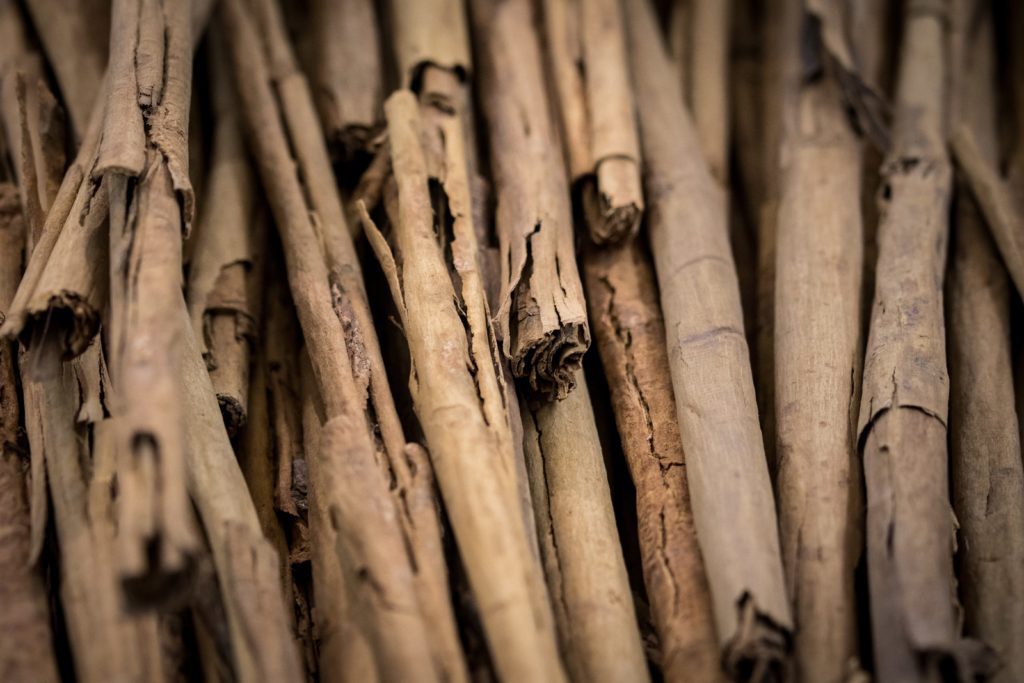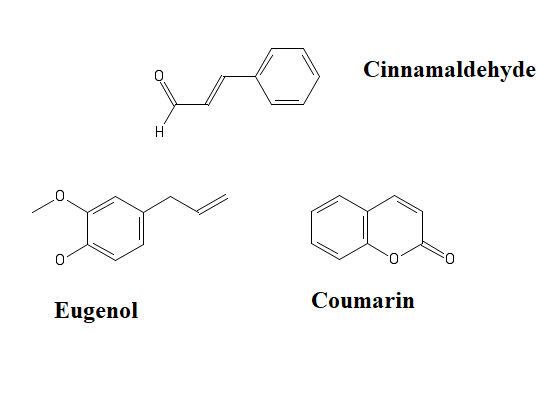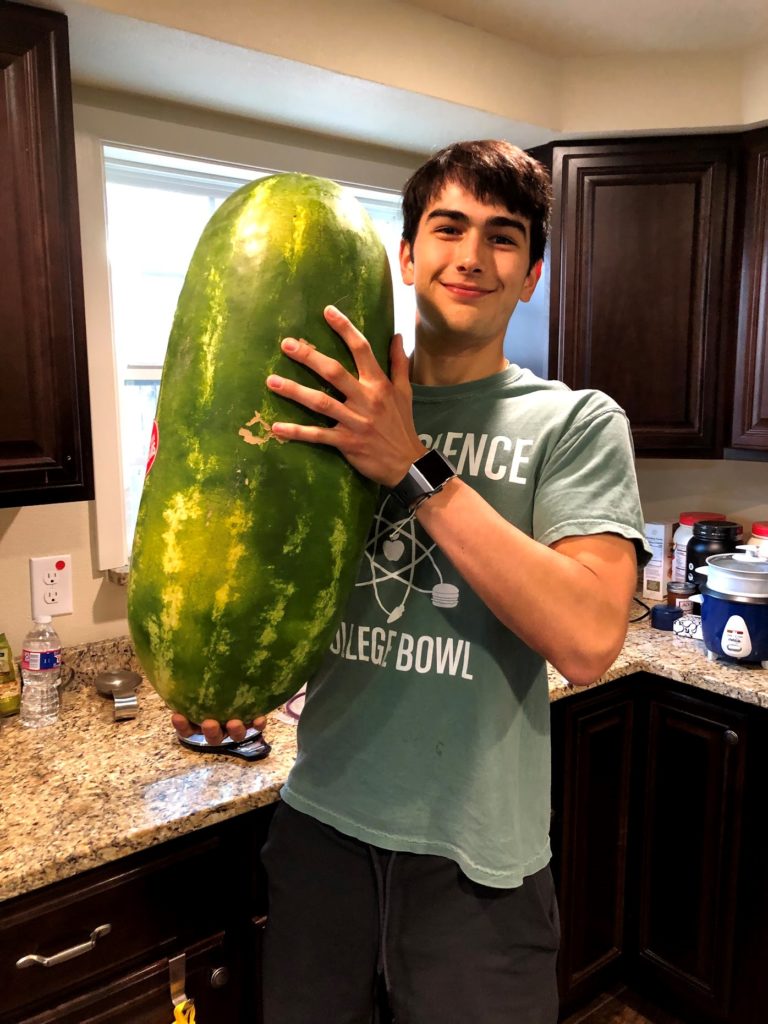By Jacob Webster-Jones
Before the 16th century the origins of cinnamon were unknown to the European countries, it was known as a luxurious spice with medicinal properties that they could only get from trade on the silk road. In ancient Greece and Rome, cinnamon was so valuable it was kept in the treasuries of emperors; the roman empress, Livia, even built a temple on Palatine hill in honor of her husband which surrounded a piece of cinnamon in a golden vessel1. In modern times cinnamon has lost its exoticness and has transformed into a pantry staple we probably don’t think twice about which is why you probably don’t know that what you have right now probably isn’t really cinnamon.
Botanical Origins

Image by Uriel Soberanes from Unsplash
The cinnamon you find as a spice in your pantry comes from the dried inner bark of the cinnamon trees that grow ten to fifteen meters tall. The leaves of this tree are also used in the flavor industry to make cinnamon flavor extracts. What we call cinnamon today can actually come from different plants, C. zeylanicum, C. cassia, C. burmannii, C. tamala. The first is also known as “true cinnamon” or “Ceylon cinnamon” and the last three are actually varieties of cassia, a close relative to Ceylon cinnamon but not technically the same2. Ceylon cinnamon is regarded as higher quality and is therefore more expensive than its cassia relatives, as a result most of what you buy will be cassia unless the label says “Ceylon”.
Chemical Constituents
“So what?” you may be asking, “What’s the difference between true cinnamon and cassia?” Well to get into that we need to understand the major flavor and aroma compounds within cinnamon: cinnamaldehyde and eugenol. These volatile oils are what give cinnamon its spicy, pungent, and “cinnamon” flavors and in different proportions will give different flavors. Ceylon cinnamon has a higher percentage of cinnamaldehyde compared to the cassia varieties which makes it less pungent. Cassia’s more pungent flavor is due to its higher percentage of eugenol. So, by using cassia instead of Ceylon cinnamon, you can get away with using less while achieving a similar flavor.
Not only does Cinnamon has a history of being used for its culinary uses, but also for its medicinal and preservative effects1 in ancient Greece, Rome, and India. Aside from adding some flavor to your food, cinnamon may help increase insulin sensitivity and lipid metabolism if regularly included in the diet3-6. I love cinnamon and eat it every morning; and one of my biggest pet peeves is when people try to tell me that food is poison, so this next part took a lot for me to write. However, in order to give a holistic view of cinnamon, negative aspects must be mentioned as well as positive aspects. Coumarin, another compound commonly found in cassia and, in trace amounts, in true cinnamon, has some less than exciting hepatoxic (liver damaging) and carcinogenic (cancer causing) effects7 . It is found in relatively high amounts in cassia-based flavorings; considered a banned food substance in the U.S.; and has set usage limits by the European Food Safety Authority of 0.1mg/kg body weight per day7. Don’t let this hold you back on enjoying cinnamon; because of the low levels commonly consumed in the diet by people through food, it would lower the potential risk of toxicity.

Graphic by Jacob Webster-Jones
What once used to be an expensive luxury item and closely kept secret of merchants in the 16th century is now used all over the world in a variety of cuisines and dishes. We see it in sweet foods like apple and pumpkin pies and breakfast cereals, as well as savory foods with Chinese five spice and garam masala. I hope now with a little more knowledge of cinnamon’s history and uses, you’ll be able to appreciate its wide variety of uses. My personal favorite is in chili with a little bit of espresso, it sounds weird but trust me I’m a food scientist.
References
- Toussaint-Samat, M. (2009). A History of Food, Wiley.
- Parthasarathy, V. A., et al. (2008). Chemistry of Spices, CABI.
- Solomon, T. P. J. and A. K. Blannin (2009). “Changes in glucose tolerance and insulin sensitivity following 2 weeks of daily cinnamon ingestion in healthy humans.” European Journal of Applied Physiology 105(6): 969.
- Anderson, R. A., et al. (2004). “Isolation and Characterization of Polyphenol Type-A Polymers from Cinnamon with Insulin-like Biological Activity.” Journal of Agricultural and Food Chemistry 52(1): 65-70.
- Sheng, X., et al. (2008). “Improved Insulin Resistance and Lipid Metabolism by Cinnamon Extract through Activation of Peroxisome Proliferator-Activated Receptors.” PPAR Research 2008: 581348.
- Singh, G., et al. (2007). “A comparison of chemical, antioxidant and antimicrobial studies of cinnamon leaf and bark volatile oils, oleoresins and their constituents.” Food and Chemical Toxicology 45(9): 1650-1661.
- Wang, Y.-H., et al. (2013). “Cassia Cinnamon as a Source of Coumarin in Cinnamon-Flavored Food and Food Supplements in the United States.” Journal of Agricultural and Food Chemistry 61(18): 4470-4476.
 Jacob Webster-Jones | Linkedin
Jacob Webster-Jones | Linkedin
SMF Blog Writer
Jacob found his passion for food science while on an elementary school field trip to a R&D lab in San Antonio, Texas. Since then he has been interested in why food behaves the way it does and how it can be used to improve people’s quality of life. He is currently pursuing his bachelor’s degree in Food Science & Technology from Texas A&M University and is the current president of his school’s food science club and IFTSA chapter. After he graduates, Jacob plans on going to work for a few years before returning to start a graduate degree, his ultimate goal is to work in research and development for a flavor company. On the off chance he has free time you can find him experimenting in the kitchen or enjoying the outdoors.






Leave a Reply